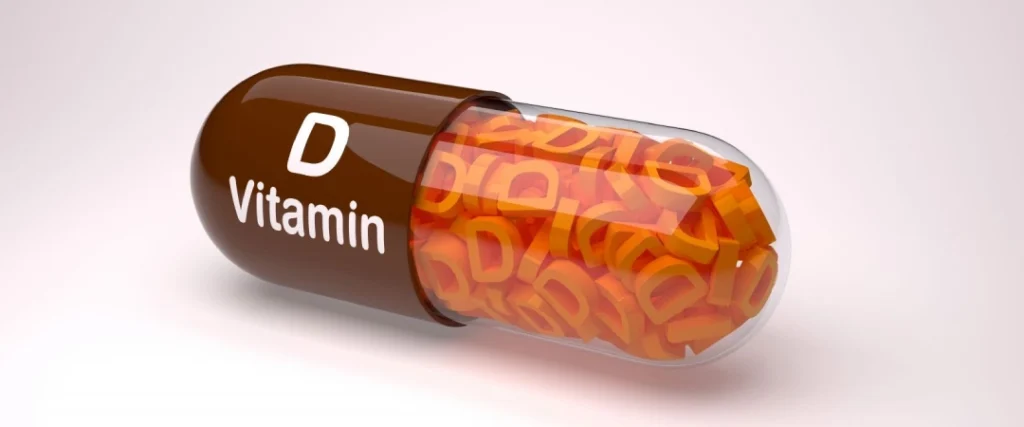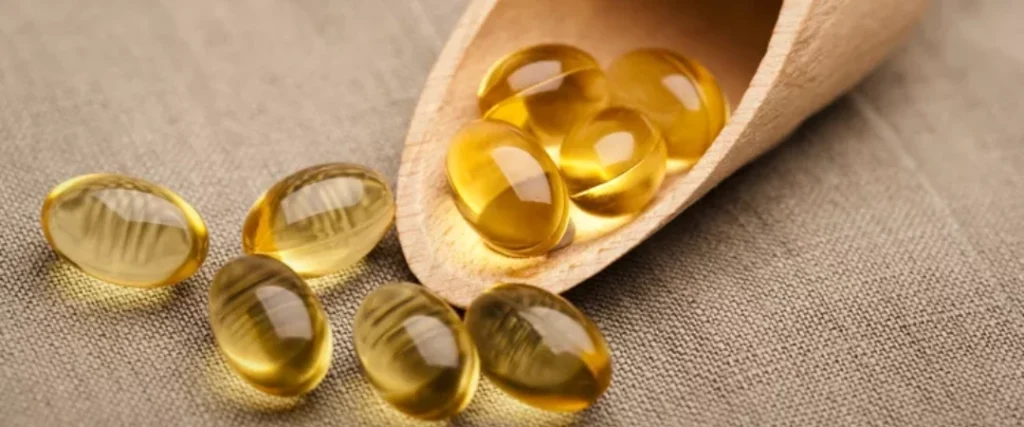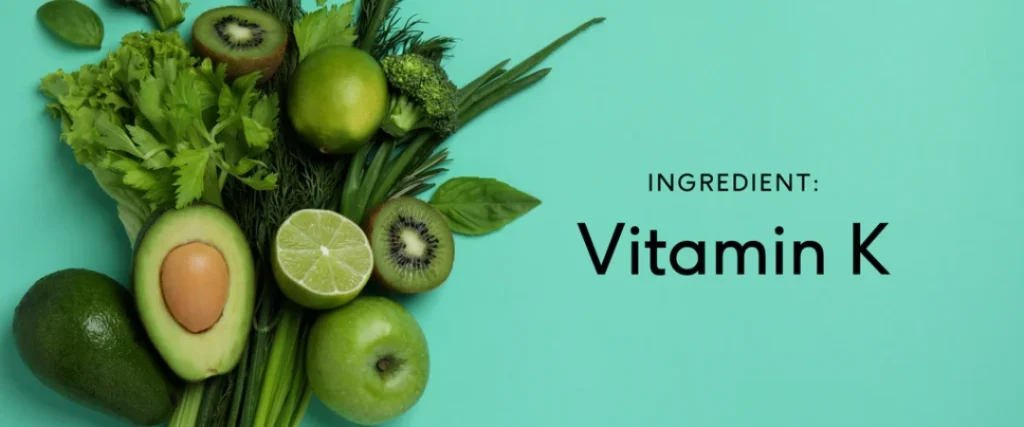Nutrition & Health
The Science of WellBeing
Discover the essential nutrients that fuel your body, mind, and life.
Table of Contents
You are what you eat.
Every one of us is different and unique. Even if our diets are similar, one becomes ill often while another rarely does. While one suffers from cancer at his early stage of life, another thrives and enjoys his longevity and health to his 90s. Our DNAs determine our uniqueness in our health and bodily functions. Is it a matter of luck: who you were born from? Maybe, but there is a way to fill this gap: by supplementing the nutrients one is deficient in or lacking to reach their optimal level of bodily functions to maintain health, prevent future illnesses or improve existing conditions.

- What are micronutrients?
Truth: Micronutrients such as vitamins and minerals are crucial to human health and our well-being; however, those convenient multivitamin pills hardly benefit our health.
Why we need all the nutrients such as vitamins, minerals, proteins, etc.
It is impossible to consume a sufficient amount of vitamins and minerals from the food we eat each day. Supplements are the most ideal option if our goal is to improve our health or conditions. Vitamins and minerals rarely act alone; they form synergistic networks in metabolism. Each vitamin often requires minerals as cofactors, and minerals often need vitamins for absorption, transport, or activation.
Why not just take multivitamins…
It is impossible to fit all the nutrients we need in a swallowable capsule. A standard capsule or tablet is usually only about 0.5–1 gram in weight. That’s very small compared to the actual amounts of vitamins and minerals our body needs.
Why Not Multivitamins?
“What fits in a multivitamin pill” vs. “What your body really needs daily”
Macronutrient-like minerals are bulky
● Magnesium → optimal intake is ~300–400 mg/day.
● Potassium → recommended ~3,500–4,700 mg/day.
There’s no way to fit these into a single multivitamin pill — they’d make it the size of a golf ball. So, multivitamins usually include only a token amount of these minerals, not enough to make a real impact.
Therapeutic doses don’t fit
Higher, research-backed doses of certain vitamins (like Vitamin D, C, E or B-complex) are often much higher than what’s in a multivitamin.
Example: A multivitamin may have 60 mg of Vitamin C, but optimal immune support often uses 1000 mg or more.
Form quality vs. space
Good forms (like magnesium glycinate, methylated folate, CoQ10) take more space. Many multivitamins use cheaper, less effective forms to save space.
In summary
Multivitamins are convenient, but because of size limits, they cannot provide enough of the bulkier or higher-dose nutrients. For real health benefits, a multivitamin is not sufficient by itself and needs to be combined with additional targeted supplements. However, taking bigger doses of multivitamins can harm you as some of the vitamins and minerals are only needed in much smaller amounts.
Taking the optimal amount of vitamins and minerals
promotes overall health.
It’ll promote immunity, recovery, mental health,
better skin, anti-aging and longevity.
We also need a sufficient amount of protein intake
for them to be achieved.
Absorption Synergies
● Vitamin D + Calcium + Magnesium + Vitamin K2
○ Vitamin D increases calcium absorption.
○ Magnesium activates Vitamin D into its usable form.
○ Vitamin K2 directs calcium into bones/teeth (not arteries).
● Vitamin C + Iron
○ Vitamin C greatly improves absorption of non-heme iron (from plants).
● Zinc + Vitamin A
○ Zinc is required to transport Vitamin A (retinol-binding protein).
Metabolic Activation
● B Vitamins + Minerals
○ B vitamins are coenzymes, minerals are cofactors → together they runenzymes of glycolysis, Krebs cycle, and ATP synthesis.
○ Example:
■ B1 (thiamine) + magnesium = cofactor for pyruvate dehydrogenase.
■ B6 (pyridoxine) + zinc = needed for neurotransmitter synthesis.
■ B12 + iron + folate = needed for red blood cell formation.
Antioxidant Networks
● Vitamin E + Vitamin C + Selenium + Zinc + Copper + Manganese
○ Vitamin E protects cell membranes (fat-soluble).
○ Vitamin C regenerates Vitamin E (water-soluble).
○ Selenium, zinc, copper, and manganese are cofactors for antioxidant enzymes (like glutathione peroxidase and superoxide dismutase).
○ Together, they form a multi-layer defense system against oxidative stress
Immune Synergy
● Vitamin C + Vitamin D + Zinc + Selenium
○ Vitamin D primes immune cells.
○ Vitamin C supports white blood cell activity and antioxidant defense.
○ Zinc is critical for T-cell and B-cell function.
○ Selenium supports antiviral enzymes.
○ Together, they coordinate strong immune resilience.
Neurological Synergy
● B vitamins + Magnesium + Zinc + Vitamin C + Vitamin E
○ B vitamins (B1, B6, B12, folate) = neurotransmitter and myelin production.
○ Magnesium + zinc = nerve signaling and GABA/glutamate balance.
○ Vitamin C & E = protect neurons from oxidative stress
In summary
● Vitamins = coenzymes (spark plugs for reactions).
● Minerals = cofactors (structural/functional activators of enzymes).
They combine in enzyme systems, antioxidant defense, immunity, bone health, and brain function to keep the body running.
Without minerals, many vitamins can’t be activated
Without vitamins, many minerals can’t be absorbed or used.
They’re like a symphony orchestra — each nutrient is an instrument, but together they create the music of metabolism.
Vitamins B, C and E
They are great teammates!
Fat-Soluble Vitamins (A, D, E, K) – Stored in fat & liver

Vitamin A
Vision, immune defense, skin health, reproduction, gene expression.

Vitamin D
Regulates calcium & phosphorus, bone strength, immunity, hormone balance.

Vitamin E
Powerful antioxidant, protects cell membranes & fats from oxidation, supports skin & nerves.

Vitamin K
Blood clotting, bone metabolism, prevents arterial calcification.
Water-Soluble Vitamins (B-complex, C) - Not stored, excreted in urine; need frequent supply.
B-Complex (Energy & Metabolism)
B1 (Thiamine)
ATP production from carbs, nerve & muscle function.
B2 (Riboflavin)
Energy metabolism, cofactor for antioxidants (glutathione).
B3 (Niacin)
Builds NAD⁺/NADP⁺ for energy, DNA repair, mental health.
B5 (Pantothenic Acid)
Makes coenzyme A (CoA), crucial for fat & carb metabolism.
B6 (Pyridoxine)
Neurotransmitter synthesis (serotonin, dopamine, GABA), hemoglobin production.
B7 (Biotin)
Supports enzymes for fatty acid synthesis, hair/skin/nails health.
B7 (Biotin)
Supports enzymes for fatty acid synthesis, hair/skin/nails health.
B9 (Folate)
DNA/RNA synthesis, methylation, red blood cell production.
B12 (Cobalamin)
Nerve protection (myelin), red blood cell formation, works with folate in DNA synthesis.
Vitamin C
Vitamin C (Ascorbic Acid)
Antioxidant, collagen production (skin, vessels, bones),
immune defense, enhances iron absorption, recycles vitamin E.
Vitamin B + Vitamin C
Activation
Vitamin C helps convert B6 into its active form (PLP) and protects folate (B9) from oxidation, so Bs can do their jobs.
Energy metabolism
B vitamins run glycolysis and the Krebs cycle, while Vitamin C helps move fatty acids into mitochondria (via carnitine). Together, they maximize ATP production.
Neurotransmitters
We design an engaging and intuitiveVitamin C + B6 = needed for serotonin, dopamine, and GABA synthesis → supports mood and brain health.interface that reflects your brand and supports your business goals.
Vitamin C + Vitamin E
● Antioxidant partners: Vitamin E is fat-soluble and protects cell membranes from oxidation.
● When Vitamin E neutralizes free radicals, it becomes “oxidized.”
● Vitamin C regenerates Vitamin E back to its active form, so it can keep working.
● This recycling system allows both antioxidants to last longer and give stronger protection.
Vitamin B + Vitamin E
Nerve protection:
B vitamins (esp. B1, B6, B12) are essential for nerve function. Vitamin E prevents oxidative damage in nerve cell membranes. Together, they protect both the “wiring”
(nerves) and the “insulation” (membranes).
Blood health
Folate, B12, and B6 regulate homocysteine (cardiovascular health). Vitamin E reduces LDL oxidation. Both together = protection for the heart and vessels.
The Big Synergy Network (B + C + E)
● B vitamins = the spark plugs (coenzymes for metabolism).
● Vitamin C = the activator & recycler (keeps Bs active, regenerates E).
● Vitamin E = the shield (protects cells, Bs and C from oxidation).
Together, they:
● Boost energy (ATP production).
● Strengthen immunity.
● Support mental health (neurotransmitters, nerves).
● Slow aging (antioxidant defense, DNA repair).
In summary
● Vitamin Bs drive metabolism and neurotransmitters.
● Vitamin C activates and protects Bs, and recycles E.
● Vitamin E shields cells and preserves Bs.
They form a loop of activation, protection, and regeneration — far more powerful
together than separately.
ATP
Understanding why boosting ATP production matters brings it all together! ATP (Adenosine triphosphate) is literally the “energy currency” of every cell, so when your mitochondria are efficient and making plenty of ATP, almost every system in your body benefits.
1. Boosting Metabolism
● ATP fuels all metabolic reactions — from breaking down food to synthesizing proteins,
hormones, and neurotransmitters.
● Higher ATP = more efficient burning of glucose and fats, leading to:
○ Better weight management
○ Increased endurance and physical energy
○ More stable blood sugar and reduced fatigue
➢ Low ATP (mitochondrial dysfunction) = sluggish metabolism, weight gain, and reduced exercise tolerance.

- ATP is essential and very important for:
metabolism, immunity, mental health, beauty & anti-aging!
2. Strengthening Immunity
● Immune cells (like lymphocytes, macrophages, and neutrophils) need huge bursts of
ATP when fighting infections.
● ATP is required for:
○ Immune surveillance (patrolling for pathogens)
○ Antibody production (B-cell function)
○ Cytotoxic activity (killing infected or cancerous cells)
● Mitochondria also regulates inflammation. Healthy ATP production balances the immune response → strong defense without excessive inflammation.
3. Supporting Mental Health & Brain Function
The brain consumes ~20% of the body’s energy, even at rest. Adequate ATP is vital for:
● Neurotransmitter synthesis (serotonin, dopamine, GABA) → mood regulation, motivation, focus.
● Synaptic plasticity → learning and memory.
● Ion pumps in neurons → needed to fire nerve impulses properly. Low ATP in the brain is linked to brain fog, depression, anxiety, and
neurodegeneration (like Alzheimer’s or Parkinson’s).
4. Anti-Aging & Longevity
Aging is closely tied to mitochondrial decline. Boosting ATP helps slow this process by:
● Reducing oxidative stress (efficient mitochondria produce fewer damaging free radicals).
● Supporting cell repair and regeneration (ATP is needed for DNA repair, protein
folding, and autophagy).
● Maintaining muscle mass and strength (sarcopenia = mitochondrial dysfunction).
● Preserving telomere length and cell vitality.
When ATP production is high → skin repairs itself faster, stays hydrated and elastic, and resists aging; hair grows thicker, stronger, and maintains its color.
When ATP is low → skin looks dull, ages faster, and hair becomes weak, thin, or falls out.
People with healthier mitochondria often show slower biological aging, higher energy, and better resilience to disease.
In summary
Boosting ATP production = boosting life itself.
● More ATP = faster metabolism, stronger immunity, sharper brain, and slower aging.
● Poor ATP = fatigue, weak immunity, brain fog, and accelerated aging.
NAD
Now, it’s time to talk about NAD and niacin(B3).
● It’s a coenzyme found in every cell.
● Exists in two main forms:
○ NAD⁺ (oxidized form, electron acceptor)
○ NADH (reduced form, electron carrier)
Think of NAD as a rechargeable battery: it carries electrons (energy) from food to the Electron
Transport Chain (ETC) where ATP is made.

- What is NAD?
NAD = Nicotinamide Adenine Dinucleotide
NAD
● In glycolysis & Krebs cycle, enzymes transfer electrons from glucose, fats, and amino acids onto NAD⁺ → forming NADH.
● NADH then donates those electrons to the ETC, which powers ATP synthesis.
● Without NAD⁺, energy production stalls.
● DNA repair → activates enzymes (PARPs) that fix genetic damage.
● Anti-aging → fuels sirtuins (longevity proteins) that regulate stress resistance, inflammation, and metabolism.
● Cell signaling → helps regulate calcium and immune responses.
● Niacin (Vitamin B3) is the building block for NAD⁺.
● In the body, niacin (or nicotinamide, nicotinic acid) is converted → NAD⁺ and NADP⁺.
● Adequate niacin ensures there’s enough NAD⁺ for:
○ Efficient ATP production
○ Proper enzyme function
○ Strong cellular repair & resilience
In summary
● NAD⁺ = essential energy carrier + longevity molecule.
● Niacin (B3) is the raw material your body uses to make NAD⁺.
● Without niacin → low NAD⁺ → fatigue, poor ATP, impaired DNA repair, faster aging.
Many researchers now study NAD⁺ boosters (like niacin, nicotinamide riboside, NMN) for their
potential in anti-aging, brain health, and energy.
Niacin vs. NMN
Your body can make NAD⁺ from several precursors, but they don’t all enter the pathway the same way:
1. Niacin (nicotinic acid / nicotinamide) → NAD⁺
○ Straightforward, well-established pathway.
○ Requires fewer conversion steps.
○ Has decades of research for safety and efficacy.
2. NMN → must first be converted to nicotinamide riboside (NR), then to nicotinamide
(NAM), before it can fully enter the NAD⁺ salvage pathway.
○ More conversion steps = less direct.
○ Less efficient compared to plain niacin, especially in tissues where NMN
transport is limited.

Why Niacin Can Be
More Efficient
● Direct precursor: Niacin feeds directly into NAD⁺ synthesis, unlike NMN which has extra bottlenecks.
● Better studied: Clinical use of niacin for cholesterol & energy metabolism has shown it raises NAD⁺ reliably.
● Bioavailability: Niacin is small and absorbed easily. NMN is larger and may not cross
cell membranes efficiently (needs special transporters like Slc12a8, which may not be widely expressed in humans).
● Cost-effective: Niacin is inexpensive, NMN supplements are far more costly without guaranteed superior effect.
BUT, the Caveats
● Niacin flush: Nicotinic acid form causes flushing (redness, warmth). Some people findc this uncomfortable.
● Nicotinamide form: Does not flush, but at very high doses may inhibit sirtuins (longevity enzymes).
● NMN: Though less efficient, it may still have tissue-specific benefits (like in muscles)
due to bypassing certain regulatory steps.
➔ Inositol Hexanicotinate a.k.a. flush-free niacin (six molecules of niacin and an inositol
molecule at the center) can be a good alternative.

Bottom Line
● Niacin = simpler, cheaper, and more direct way to boost NAD⁺.
● NMN = more hyped, but less proven and less direct — still interesting, but efficiency depends on absorption and conversion.
● For most people, niacin is the most efficient NAD⁺ booster.
Fats Are Essential for
Health
Fats are not just “fuel” — they are structural and
functional building blocks:
Energy source
Dense fuel (9 kcal/g), long-lasting
energy.
Cell membranes
Phospholipids and cholesterol form
the “walls” of every cell.
Hormones
Many hormones (like testosterone, estrogen, cortisol, vitamin D) are made from cholesterol and fatty acids.
Brain & nerves
Brain is ~60% fat; myelin (nerve insulation) requires saturated fats & cholesterol.
Absorption of vitamins
Fat-soluble vitamins (A, D, E, K) require fats for absorption.
Immune & skin health
Essential fatty acids regulate inflammation and skin barrier function.
Fat
● Found in butter, ghee, coconut oil, and animal fats.
● Chemically: no double bonds → very stable, resistant to oxidation.
● Roles:
○ Provide structural rigidity to cell membranes.
○ Protect polyunsaturated fats (PUFAs) from oxidizing.
○ Fuel heart and mitochondria efficiently.
○ Provide raw materials for hormones.
Misunderstood: For decades, they were demonized, but newer studies show natural saturated fat is not harmful but rather protective and a great source of fuel.
1. Monounsaturated fats (MUFAs)
○ Olive oil, avocados, macadamias.
○ One double bond → fairly stable.
2. Polyunsaturated fats (PUFAs)
○ Omega-3 (fish oil, flax, chia) and Omega-6 (seed oils: soybean, corn, canola).
○ Multiple double bonds → highly unstable, oxidize easily with heat, light, or oxygen.
○ When oxidized → produce lipid peroxides, which damage DNA, proteins, and membranes.
○ Omega-6 PUFAs (common in seed oils) → promote inflammation and oxidativestress.
On the other hand,
○ Omega-3s are essential (anti-inflammatory, brain health), but need protection from oxidation (vitamin E, saturated fats).
● Unsaturated fats are prone to oxidation because of their double bonds.
● Oxidized fats = toxic byproducts that accelerate:
○ Atherosclerosis (damaged LDL → plaque buildup)
○ Aging (free radicals, mitochondrial damage)
○ Inflammation-related diseases (arthritis, neurodegeneration)
This is why deep-fried foods (using seed oils) are so harmful → they’re loaded with oxidized fats.
● Monounsaturated fats: Healthy (olive oil, avocado, macadamia).
● Polyunsaturated fats: Needed for physical and mental health (omega-3s), but keep fresh, cold-pressed, never heated.
● Avoid excess omega-6 seed oils such as Soybean, Corn, Cottonseed, Canola, Sunflower, Safflower, Grapeseed, Rice bran, Peanut, Sesame oil or, Vegetable oil blends → easily oxidized, promote inflammation.
● Saturated fats: Crucial, stable, protective. Great source of fuel (butter, ghee, coconut, pastured meats).
Why Whey Protein?
Not plant-based protein.
Whey is a more ideal and better source of protein and gentler on the digestive system than plant-based proteins.
Proteins are made up of amino acids. Of the 20 total, 9 are essential amino acids (EAAs) that your body cannot make and must come from food. A “complete” protein has all 9 EAAs in sufficient amounts.
● Whey protein (from milk) is considered the “gold standard.” It has all 9 EAAs in high concentrations and is especially rich in leucine, the key amino acid that triggers muscle protein synthesis (MPS). Whey’s amino acid profile closely matches human needs, making it highly digestible and effective.
● WPC – Whey Protein Concentrate contains more nutrients without the filtration.
- Lactose – small amounts, provides minor energy and sweetness.
- Milk Fat / Phospholipids – includes beneficial fatty acids and fat-soluble compounds.
- Immunoglobulins – antibodies that may support immune function.
- Lactoferrin – supports immunity and iron transport.
- Growth Factors – small amounts of bioactive proteins for tissue repair.
- Micronutrients – trace amounts of calcium, magnesium, potassium, and phosphorus.
● WPI – Whey Protein Isolate has less of the nutrients but has its benefits.
- High Protein Content – Typically 90%+ protein by weight, making it excellent for muscle building and repair.
- Low in Fat and Carbs – Ideal for people on low-carb or low-fat diets.
- Fast Absorption – Quickly digested, which helps deliver amino acids to muscles rapidly, especially after workouts.
- Supports Muscle Growth & Recovery – Rich in branched-chain amino acids (BCAAs), especially leucine, which triggers muscle protein synthesis.
- May Aid Weight Management – High protein content promotes satiety, helping control appetite and support fat loss.
- Lactose-Friendly – Contains minimal lactose, often tolerable for those sensitive to dairy.
- Immune Support – Contains bioactive peptides that may support the immune system.
● Vegan proteins (from plants like pea, rice, hemp, or soy) can be lower in one or more essential amino acids. Their incomplete amino acid profiles make it hard for our body to use them as a source of protein.

- Grass-fed whey protein
Grass-fed whey is the better choice for muscle growth, recovery, and nutrient density because it’s a complete, highly bioavailable protein with added health benefits from grass-fed sourcing. Plant-based proteins are inefficient at protein synthesis in our body due to the incomplete amino acid profiles.
Better Fatty Acid Profile
● Grass-fed cows produce milk naturally higher in omega-3 fatty acids and conjugated linoleic acid (CLA).
● These compounds are associated with improved heart health, anti-inflammatory effects, and fat metabolism.
● While whey isolate has most fats filtered out, grass-fed whey concentrate tends to retain more of these beneficial lipids.
Higher Micronutrient Content
● Milk from grass-fed cows typically has more fat-soluble vitamins like Vitamin A, Vitamin E, and Vitamin K2, as well as antioxidants like glutathione precursors.
Fewer Contaminants
● Grass-fed whey usually comes from cows raised without routine antibiotics, synthetic hormones (like rBGH/rBST), or GMO feed.
Ethical & Environmental Benefits
● Grass-fed cows are often raised in more humane, pasture-based systems.
● Pasture-based dairy has a smaller environmental footprint than intensive grain-fed systems.
Magnesium
Magnesium is one of the most important minerals and an essential mineral involved in hundreds of biochemical reactions in the body.
● Magnesium is a cofactor in ATP (cellular energy) production, helping convert food into
usable energy.
● Supports muscle contraction and relaxation, preventing cramps and spasms.
● Essential for nerve signaling, helping nerves communicate properly with muscles and
the brain.
● Works with calcium and vitamin D to build and maintain strong bones.
● Helps regulate bone density and prevent osteoporosis.
● Maintains normal heart rhythm and supports healthy blood pressure.
● Helps relax blood vessels, improving circulation.
● Supports neurotransmitters involved in calming the nervous system, which can reduce
stress and improve sleep.
● Low magnesium is linked to anxiety, depression, and insomnia.
● Aids in glucose metabolism and insulin regulation, supporting energy balance and metabolic health
L-Glutamine
L-Glutamine is one of the most abundant amino acids in the body and plays multiple crucial roles beyond just being a building block for protein.
1. Gut Health
● Glutamine is the primary fuel for intestinal cells.
● Helps maintain the integrity of the gut lining, reducing “leaky gut.”
● Supports digestion and nutrient absorption.
2. Immune Support
● Immune cells (like lymphocytes and macrophages) rely on glutamine for energy.
● Adequate glutamine levels help strengthen immune function, especially during stress, illness, or intense exercise.
3. Muscle Recovery & Protein Synthesis
● Glutamine supports muscle repair after exercise by providing nitrogen for
protein synthesis.
● May help reduce muscle soreness and prevent catabolism during heavy training.
4. Anti-Inflammatory & Detoxification
● Supports the production of glutathione, a powerful antioxidant.
● Helps the body manage oxidative stress and remove toxins efficiently.
5. Brain Health
● Glutamine can convert into glutamate, a key neurotransmitter, which further converts into GABA in the brain, and helps maintain neurotransmitter balance.
● Supports cognitive function, focus, and may help regulate mood under stress.
6. Stress & Recovery
● During intense physical or mental stress, the body’s glutamine levels drop. A sufficient dose of supplementation can help maintain energy, immunity, and recovery.
L-acetylcarnitine
L-acetylcarnitine (ALCAR) is a form of the amino acid derivative L-carnitine that can cross the blood-brain barrier more easily, giving it both brain and body benefits.
- 1. Brain & Cognitive Support
● Enhances energy production in neurons by helping mitochondria use fatty acids.
● May improve memory, focus, and mental clarity, especially in aging brains.
● Supports neuroprotection, helping reduce oxidative stress and slowing cognitive decline.
● Sometimes studied for mood support, including mild depression.
- 2. Energy & Fat Metabolism
● Helps transport fatty acids into mitochondria for energy production.
● Supports fat-burning and stamina, which is why it’s popular in fitness and weight management.
- 3. Nerve & Mitochondrial Health
● May aid in nerve regeneration and repair, particularly in neuropathic conditions.
● Supports mitochondrial function, improving energy at a cellular level.
- 4. Antioxidant & Anti-Aging Effects
● Helps reduce oxidative stress in the brain and other tissues.
● Supports overall cellular health and longevity.
Taurine
Taurine is a conditionally essential amino acid-like compound that plays many important roles in the body, especially for heart, brain, eye, and muscle health.
1. Heart and Cardiovascular Health
● Helps regulate blood pressure and maintain proper electrolyte balance.
● Supports heart muscle function and can improve cardiac performance.
● May reduce risk factors associated with heart disease, like oxidative stress and
inflammation.
2. Brain and Nervous System
● Acts as a neuromodulator and stabilizes neuron activity.
● Supports cognitive function, mood, and mental focus.
● Protects neurons against oxidative stress and excitotoxicity.
3. Eye Health
● Concentrated in the retina; helps maintain healthy vision.
● Supports proper function of photoreceptor cells and may protect against age-related eye issues.
4. Muscle Performance and Recovery
● Plays a role in muscle contraction and calcium regulation.
● Can help reduce muscle fatigue, improve endurance, and support post-workout recovery.
5. Antioxidant & Cellular Protection
● Taurine stabilizes cell membranes and helps counteract oxidative stress.
● Supports overall detoxification and metabolic health.
6. Blood Sugar & Metabolic Health
● May improve insulin sensitivity and glucose metabolism.
● Supports healthy energy use in muscles and other tissues.
Alpha-lipoic acid
Alpha-lipoic acid (ALA) is a powerful antioxidant that plays a critical role in energy production and cellular protection.
1. Powerful Antioxidant
● Neutralizes free radicals in both water- and fat-soluble parts of the cell, which most antioxidants can’t do.
● Helps regenerate other antioxidants like vitamin C, vitamin E, and glutathione..
● Protects cells from oxidative stress, which is linked to aging and chronic disease.
2. Supports Energy Production
● Acts as a cofactor in mitochondrial enzymes, helping convert glucose into energy efficiently.
● Supports cellular metabolism and overall vitality.
3. Blood Sugar & Metabolic Health
● Helps improve insulin sensitivity and supports healthy blood glucose levels.
● May help reduce oxidative damage caused by high blood sugar.
4. Brain and Nerve Health
● Crosses the blood-brain barrier to protect neurons from oxidative damage.
● Supports cognitive function, memory, and may help with neuropathic conditions.
5. Skin & Anti-Aging Benefits
● Reduces oxidative stress in skin cells, potentially supporting youthful skin.
Can help prevent glycation-related damage that accelerates aging..
● Supports cognitive function, focus, and may help regulate mood under stress.
6. Detox Support
● ALA binds to heavy metals and helps in detoxification processes, protecting organs from damage.

